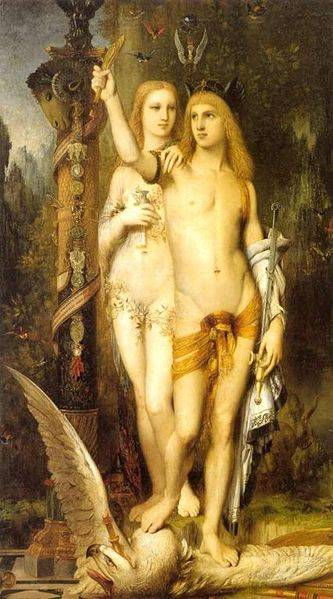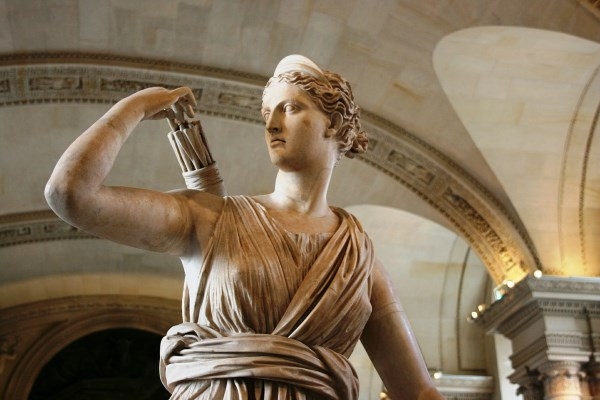By: Inga Thornell
As her senior project and final paper for her East/West major, BA graduate Inga Thornell wrote a research paper on the role of women and myth in society.
The study of mythology and literature can be a useful means of determining the paradigms of a culture. This paper will examine examples of Goddesses and women from Greco-Roman and Indian mythology and epic poetry to determine what these stories show us about women’s roles in these cultures and how these characters compare to what is known of real women in each society. The historical period under examination is each culture’s “Epic period.” The Epic period encompasses different years for each civilization in the same way that the term “iron age” does.
Myths and literature can teach us how another culture views its life events and how they view their gods. They provide insights about the religion, customs and rituals of a civilization. They also provide models of societal expectations and demonstrate human behavior. Myths also teach us about ourselves. In fact, it is too easy to read myth without acknowledging its own cultural milieu, and while its relevance to all eras is part of myths’ appeal, this can cause misunderstandings of the myth itself. The myth of Persephone is a good example of this propensity to misunderstanding since moderns tend to read this myth through their own lens and to emphasize the violence of the “rape” motif without realizing that this is a tale of ancient marriage customs. While the event of Persephone’s abduction and non-consensual marriage is shocking, the modern understanding of the word “rape” is not an accurate description of it.
 As a reader, it is easy to become caught up in the richness of the characters in myth: Kunti, Draupadi, Briseis and of course, Nausicaa. However, as a researcher, one must remember the status of women in these societies: the Greek sage, Teireseis, is turned into a woman as a punishment, and the Indian daughter, Sikhandin, is transformed into a son from her “desire to do good.” Hesiod describes the origin of women:
As a reader, it is easy to become caught up in the richness of the characters in myth: Kunti, Draupadi, Briseis and of course, Nausicaa. However, as a researcher, one must remember the status of women in these societies: the Greek sage, Teireseis, is turned into a woman as a punishment, and the Indian daughter, Sikhandin, is transformed into a son from her “desire to do good.” Hesiod describes the origin of women:
[Zeus] bade famous Hephaestus make haste and mix earth with water and to put in it the voice and strength of human kind, and fashion a sweet, lovely maiden-shape, like to the immortal goddesses in face; and Athena to teach her needlework and the weaving of the varied web; and golden Aphrodite to shed grace upon her head and cruel longing and cares that weary the limbs. And he charged Hermes the guide, the Slayer of Argus, to put in her a shameless mind and a deceitful nature. So he ordered. And they obeyed the lord Zeus the son of Cronos.
Given this attitude toward gender, epic poetry cries out to be read with critical thinking skills engaged. The women in the Epics are not historical figures but are what the male poets imagined them to be like or to think like. Often they were merely foils for the other male characters. We must ask, is Briseis in love with Achilles because there is something loveable about him; or is she in love with him because Homer, writing for fighting men, needs to reinforce that their captive women really do love them and are not just biding their time while waiting to stab them in their sleep? Is Draupadi married to five brothers because Kunti really had a compulsive fear of lying, or did that become the reason later when polyandry became less common among the wealthy Kshatriya families? Even though Bhishma makes all the other major family decisions, it became more politic to shift the blame for the polyandry to the woman.
Inga Thornall, Senior Project (c) 2008
Click here for PDF of entire paper



